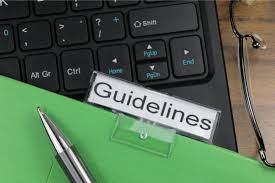Theoretical Guidelines: The Complete Guide to Creating a Research Document "Blueprint"

Theoretical Guidelines: The Complete Guide to Creating a Research Document “Blueprint”
Research requires theories. Theories in a quantitative study try to address the research issue. However, theories have a variety of functions in qualitative research. That is, it might either result in the study's final result or offer "new lenses" through which they can see the complicated problem from a different angle, concentrate on different data points, or analyse and interpret the data. Theories make connections, but a theoretical framework establishes the goal of the research and provides the structure for the research paper.
According to Eisenhart, "a theoretical framework is the structure that directs research by relying on a formal theory that is developed through the cogent explanation of particular phenomena and relationships." The theoretical framework serves as the foundation for the entire investigation. The theoretical framework provides a justification for looking into a particular research subject and is typically presented in the first section of a research document. It offers a framework that outlines the organisation and structure of the research paper from an epistemological, philosophical, analytical, and methodological standpoint.
Goals of a theoretical framework
As said earlier, theoretical framework provides a rationale for investigation and demonstrates that the research was not unanticipated. The main goals of theoretical framework are:
- Defining significant concepts
- Explaining assumptions and expectations
- Analysee, choose and combine similar/relevant theories
Developing a theoretical framework
To develop a theoretical framework, a researcher is required to have a deep understanding of the following three aspects.
- The problem must establish a connection between two factors resulting in a quandary that cause further investigation. The problem statement defines the central problem and areas that require further research/investigation.
- Purpose describes the aims and outcomes of the problem.
- Significance, as the name suggests, explains the importance of your study and how it contributes to the existing knowledge.
Steps involved in developing a theoretical framework are:
- Choose key concepts – Identify the crucial terms from the research question and problem statement. Since concepts include multiple definitions, you can use a theoretical framework to explain the meaning of each term. For example, ABC institute was facing increased student absenteeism. It aimed at improving student presentism and assumes that fun learning plays a key role in achieving the process. To investigate the issue, research questions, objective and problem statement was defined. ‘How the student presentism can be improved?’ was the research question, ‘including fun learning’ was the objective and ‘increase in student absenteeism’ was the problem statement. Here, fun learning & student presentism are the key focus of the study and the theoretical framework must describe these concepts.
- Define and assess theories – To identify key concepts, conduct a literature review and determine how previous researchers have defined the key concepts and drew connections between them. Further, when working on the framework, compare and analyse the approaches previously used. This is followed by explaining the model that fits best for your study and justifying the reasons behind using the same. In complex research, you can combine theories from various fields and create a unique framework. However, if there exists a well-established theory and you are not using it, justify the reason for the same.
- Describe the significant contributions –After establishing links between the existing theories, the next (final) step is to explain how your research fits in the field of interest. Describe how the theory will be tested and how the results contribute to the existing information. Explain if you have used a specific theory as a basis for understanding and interpreting the data. Demonstrate if your theory would challenge or criticise the existing theories and did you combine theoretical methods to obtain a new approach.
Why is this framework important?
- Theoretical framework lets you clarify the implicit theory in a defined and clear manner.
- It considers other frameworks and reduces the bias in the data interpretation.
- It explains to the reader your perspective and context.
- It includes a coherent and interrelated set of ideas and forms generalisation about observations.
- It explains the central phenomenon, events or relationships.
- If required, theoretical framework can be used to develop a hypothesis.
Theoretical frameworks are of various types. Depending on the type of study, the perspective in which you are approaching the study and the key concept to be conveyed, choose an apt theory and lay a strong foundation for your research document.
Frequently Asked Questions (FAQ):
Q1: What are theoretical guidelines in the context of a research document?
- A1: This blog delves into the theoretical guidelines that form the foundation of a research document 'blueprint,' providing clarity on crafting a well-structured and precise academic work.
Q2: How can I organize my research document effectively?
- A2: Explore step-by-step instructions and practical insights in this guide, offering tips on organizing your research document to enhance clarity and academic excellence.
Q3: Are there specific guidelines for writing the methodology section of a research document?
- A3: Yes, discover specific guidelines for writing the methodology section and other crucial aspects of your research document, ensuring a cohesive and rigorous academic presentation.
Q4: How can the 'blueprint' approach elevate the quality of my research document?
- A4: Understand the 'blueprint' approach and its role in creating a high-quality research document. This guide provides insights to help you craft a document that stands out in the academic landscape.
Conclusion:
In conclusion, this comprehensive guide unravels the theoretical guidelines and practical insights needed to create a research document 'blueprint.' By following the step-by-step instructions and adhering to organizational principles, you can ensure that your research document not only meets academic standards but also becomes a well-crafted masterpiece that contributes to research excellence.




